Research Groups
Operating within and across the three Research Divisions are our research groups, please see below for a brief description of the work of each group and their associated research division membership. Please click on the group name below to access the group’s web pages.
GROUPS: Aerosol, Composition, Radiation & Climate | Applied Weather and Climate Hub* | Aviation | Climate & Ocean Dynamics | Data Assimilation | Dynamical Processes | Energy Met | High-resolution modelling | IEA | Land Surface* | Mesoscale | MetOffice@Reading | MicroMet | Oceans | Polar | Radiation | Remote Sensing & Clouds | Space & Atmospheric Electricity | TAMSAT | Tropical | Tropical Cyclones | Turbulence | Urban Met | Water@Reading*
Many groups* operate in conjunction with the department of Geography and Environmental Sciences (GES) and we also interact with the following GES research groups: Centre for Past Climate Change | Land Surface Processes Cluster | Marine Ecosystem Science | PalaeoEnvironments and Climate Analysis | Participation Lab | Soil Research Centre.
Staff also collaborate through our Interdisciplinary Research Centres including the People and Place: Evidence-Based Adaptation for Resilient Livelihoods (PERL) group and our NERC centres, the National Centre for Atmospheric Sciences (NCAS) and National Centre for Earth Observations (NCEO):
![]()
![]()
Aerosol, Composition, Radiation & Climate
Group leaders: Nicolas Bellouin, Claire Ryder, Laura Wilcox, Keith Shine
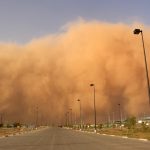 The ACRC group combines the interests of the Aerosol and Radiation groups. The Aerosol Group studies the chemical and optical properties of different aerosol types and the radiative and climatic impact of aerosols. We are involved in both the analysis of observations of real aerosol and in climate modelling. We aim to identify and quantify the uncertainties in radiative forcing, climate change and the hydrological cycle due to changes in tropospheric and stratospheric aerosols and other mechanisms. The Radiation Group focuses on the interaction of solar and infrared radiation with the Earthʼs atmosphere. It performs fundamental research on the way water vapour absorbs radiation, collaborating with experimental spectroscopists, and applied research on the impact of human activity on the radiation budget, including aviationʼs role in climate change.
The ACRC group combines the interests of the Aerosol and Radiation groups. The Aerosol Group studies the chemical and optical properties of different aerosol types and the radiative and climatic impact of aerosols. We are involved in both the analysis of observations of real aerosol and in climate modelling. We aim to identify and quantify the uncertainties in radiative forcing, climate change and the hydrological cycle due to changes in tropospheric and stratospheric aerosols and other mechanisms. The Radiation Group focuses on the interaction of solar and infrared radiation with the Earthʼs atmosphere. It performs fundamental research on the way water vapour absorbs radiation, collaborating with experimental spectroscopists, and applied research on the impact of human activity on the radiation budget, including aviationʼs role in climate change.
Research Divisions: Climate, Weather, Earth Observation and Space
Hub for Applied Weather and Climate Research (HAWC)
Group leaders: Liz Stephens, Vicky Boult, Kieran Hunt
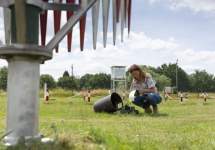 The Hub for Applied Weather and Climate Research (HAWC) brings together world-leading weather and climate expertise from across the University of Reading. We undertake research which integrates weather and climate information from models, satellite and in-situ data into onward modelling and decision-support tools to enable the maximum value to be derived across multiple sectors.
The Hub for Applied Weather and Climate Research (HAWC) brings together world-leading weather and climate expertise from across the University of Reading. We undertake research which integrates weather and climate information from models, satellite and in-situ data into onward modelling and decision-support tools to enable the maximum value to be derived across multiple sectors.
Research Divisions: Climate, Weather, Earth Observation and Space
Aviation Meteorology
Group leaders: Helen Dacre, Keith Shine, Paul Williams
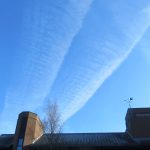 The Aviation Met group aims to bring together all aspects of research related to aviation within the Meteorology Department. The group meets regularly each semester to exchange knowledge. We welcome external visitors from the aviation industry to discuss current research and potential collaboration opportunities.
The Aviation Met group aims to bring together all aspects of research related to aviation within the Meteorology Department. The group meets regularly each semester to exchange knowledge. We welcome external visitors from the aviation industry to discuss current research and potential collaboration opportunities.
Research Divisions: Climate, Weather, Earth Observation and Space
Data Assimilation Research Group (DARC)
Group leader: Sarah Dance, Amos Lawless
 We work on data assimilation theory and applications in all areas of the geosciences, including meteorology, atmospheric chemistry, oceanography, land surface physics, coastal sediment transport and space. Novel research areas include the development of particle filters for high dimensional systems and quantifying observation and model error correlations.
We work on data assimilation theory and applications in all areas of the geosciences, including meteorology, atmospheric chemistry, oceanography, land surface physics, coastal sediment transport and space. Novel research areas include the development of particle filters for high dimensional systems and quantifying observation and model error correlations.
Research Divisions: Weather, Climate, Earth Observation and Space – also NCEO
Dynamical processes group
Group leader: Brian Hoskins
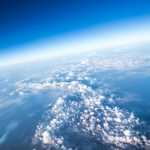 The aim of the group is to enhance the understanding of the dynamics and nature of phenomena that occur in the atmosphere on meso to global scales and that are important in weather and climate. This aim is pursued using a combination of theory, diagnostics of observations and the design, execution and diagnosis of experiments using a range of numerical models.
The aim of the group is to enhance the understanding of the dynamics and nature of phenomena that occur in the atmosphere on meso to global scales and that are important in weather and climate. This aim is pursued using a combination of theory, diagnostics of observations and the design, execution and diagnosis of experiments using a range of numerical models.
Research Divisions: Weather, Climate, Earth Observation and Space
Energy meteorology group
Group leader: David Brayshaw
 The Energy Meteorology research group seeks to understand the impact of weather and climate on the energy sector and to develop new ways to exploit weather and climate information for energy risk management.
The Energy Meteorology research group seeks to understand the impact of weather and climate on the energy sector and to develop new ways to exploit weather and climate information for energy risk management.
Research Divisions: Weather, Climate
High-resolution global climate modelling (HRCM) group
Group leader: Pier Luigi Vidale
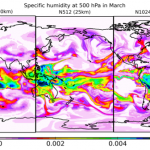 The High-Resolution global Climate Modelling (HRCM) group is a long-standing collaboration between NCAS and the Met Office in the development of high-resolution global climate models, metrics and process-based model evaluation regarding the role of resolution in atmospheric and oceanic processes, air-sea interactions, and land surface-atmosphere interactions (e.g. energy and water cycles, mean and extreme precipitation, tropical and extra-tropical cyclones, blocking events, heat waves and droughts, ocean eddies).
The High-Resolution global Climate Modelling (HRCM) group is a long-standing collaboration between NCAS and the Met Office in the development of high-resolution global climate models, metrics and process-based model evaluation regarding the role of resolution in atmospheric and oceanic processes, air-sea interactions, and land surface-atmosphere interactions (e.g. energy and water cycles, mean and extreme precipitation, tropical and extra-tropical cyclones, blocking events, heat waves and droughts, ocean eddies).
Research Divisions: Weather, Climate
THE INSTITUTE FOR ENVIRONMENTAL ANALYTICS (IEA)
Head of Data Modelling: Maria Noguer
 The Institute for Environmental Analytics is a partnership of academic, industry and public sector partners, led by the University of Reading. It bridges the gap between environmental science research and users in industry and government by carrying out collaborative projects, performing training and enabling knowledge exchange activities.
The Institute for Environmental Analytics is a partnership of academic, industry and public sector partners, led by the University of Reading. It bridges the gap between environmental science research and users in industry and government by carrying out collaborative projects, performing training and enabling knowledge exchange activities.
Research Divisions: Climate, Weather, Earth Observation and Space
LAND SURFACE PROCESSES GROUP (LSP)
Group leaders: Pier Luigi Vidale (Meteorology) and Anne Verhoef (Department of Geography and Environmental Science)
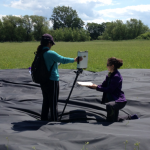 The land surface exchanges heat, momentum, water and carbon-dioxide with the atmosphere and hence plays a role in our microclimate, crop productivity, and can even affect extreme weather phenomena such as heat waves or floods. The land surface-atmosphere interactions can be summarised via the land surface energy-, water- and carbon balance and related key processes, variables and parameters; it is these that are studied by members of the Land Surface Processes Cluster.
The land surface exchanges heat, momentum, water and carbon-dioxide with the atmosphere and hence plays a role in our microclimate, crop productivity, and can even affect extreme weather phenomena such as heat waves or floods. The land surface-atmosphere interactions can be summarised via the land surface energy-, water- and carbon balance and related key processes, variables and parameters; it is these that are studied by members of the Land Surface Processes Cluster.
Research Divisions: Climate, Weather, Earth Observation and Space
Mesoscale group
Group leader: Sue Gray
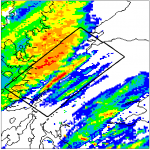 The Mesoscale Group is comprised of academic staff, postdoctoral researchers (including scientists funded by the NCAS atmospheric physics Directorate), PhD students, and Met Office researchers who share a common interest in mesoscale weather processes and systems. The mesoscale, which occupies a horizontal length-scale range of approximately 1–1000 km, incorporates a vast array of meteorological phenomena, from individual convective storms and gravity waves to tropical and extratropical cyclones. Research interests within the Mesoscale Group are diverse and include the predictability and parametrization of convection, diabatic processes within extratropical cyclones, pollution and volcanic ash transport, sting-jet dynamics, stationary rainbands, stratosphere/troposphere exchange, and urban meteorology.
The Mesoscale Group is comprised of academic staff, postdoctoral researchers (including scientists funded by the NCAS atmospheric physics Directorate), PhD students, and Met Office researchers who share a common interest in mesoscale weather processes and systems. The mesoscale, which occupies a horizontal length-scale range of approximately 1–1000 km, incorporates a vast array of meteorological phenomena, from individual convective storms and gravity waves to tropical and extratropical cyclones. Research interests within the Mesoscale Group are diverse and include the predictability and parametrization of convection, diabatic processes within extratropical cyclones, pollution and volcanic ash transport, sting-jet dynamics, stationary rainbands, stratosphere/troposphere exchange, and urban meteorology.
Research Divisions: Weather, Earth Observation and Space
Met Office@Reading
![]() The Department of Meteorology, University of Reading hosts around 25 scientists from the Met Office within the Meteorology building at Reading, working on convective-scale, modelling, ensembles, predictability and data assimilation, urban modelling, novel observations, land surface data assimilation and climate change.
The Department of Meteorology, University of Reading hosts around 25 scientists from the Met Office within the Meteorology building at Reading, working on convective-scale, modelling, ensembles, predictability and data assimilation, urban modelling, novel observations, land surface data assimilation and climate change.
The Met Office has had staff at the University of Reading for about 30 years. This was originally part of the Joint Centre for Mesoscale Meteorology (JCMM) but now that Met Office staff with wider interests are located at Reading the name has been changed to MetOffice@Reading. The University of Reading is also part of the Met Office Academic Partnership.
MetOffice@Reading scientists collaborate extensively with University researchers at Reading and elsewhere. Major current and recent projects that they’ve collaborated on include DIAMET (Diabatic Influences on Mesoscale Structures in Extratropical Storms), DYMECS (Dynamical and Microphysical Evolution of Convective Storms), FFIR (Flooding from Intense Rainfall).
Micrometeorology
Group leader: Sue Grimmond
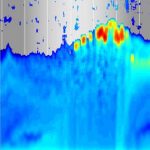 The influence of the surface on the lowest part of the atmosphere is of concern in micrometeorological studies. Research into different transfer heat, moisture, carbon dioxide and momentum processes away or towards the surface are of interest. The implications of the changing roughness and patchiness are of interest (both horizontally and vertically). The group has expertise in observation and modelling.
The influence of the surface on the lowest part of the atmosphere is of concern in micrometeorological studies. Research into different transfer heat, moisture, carbon dioxide and momentum processes away or towards the surface are of interest. The implications of the changing roughness and patchiness are of interest (both horizontally and vertically). The group has expertise in observation and modelling.
Research Division: Weather
Climate & Ocean Dynamics
Group leaders: Jonathan Gregory, Jon Robson, Remi Tailleux, David Ferreira
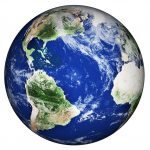 This group combines the forces of the Climate Dynamics and Ocean groups. Oceans affect Earth’s climate by storing and transporting large amounts of heat and carbon. The group uses theory, numerical models and observations to understand the physical processes controlling these phenomena, such as mixing, meridional overturning circulation, anthropogenic heat uptake, sea level change, deep water formation and Southern ocean processes.
This group combines the forces of the Climate Dynamics and Ocean groups. Oceans affect Earth’s climate by storing and transporting large amounts of heat and carbon. The group uses theory, numerical models and observations to understand the physical processes controlling these phenomena, such as mixing, meridional overturning circulation, anthropogenic heat uptake, sea level change, deep water formation and Southern ocean processes.
Research Division: Climate, Weather, Earth Observation and SpaceClimate
POLAR RESEARCH group
Group leader: Danny Feltham
 The Polar Research Group brings together a broad range of expertise with the aim of understanding, observing and predicting processes in polar oceans, atmosphere, land ice and sea ice. Polar regions are undergoing changes that have implications for trade, wildlife, society and oil exploration and serve as a sensitive indicator of climate change.
The Polar Research Group brings together a broad range of expertise with the aim of understanding, observing and predicting processes in polar oceans, atmosphere, land ice and sea ice. Polar regions are undergoing changes that have implications for trade, wildlife, society and oil exploration and serve as a sensitive indicator of climate change.
Research Divisions: Climate, Earth Observation and Space
Remote sensing and clouds group
Group leadership: Chris Westbrook, Thorwald Stein, Anthony Illingworth and Robin Hogan.
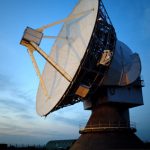 Research into remote sensing techniques and cloud processes. Development of new technologies and retrieval techniques, and their application to understanding clouds and precipitation, and evaluating their representation in numerical models. Fundamental research into cloud microphysical and radiative processes.
Research into remote sensing techniques and cloud processes. Development of new technologies and retrieval techniques, and their application to understanding clouds and precipitation, and evaluating their representation in numerical models. Fundamental research into cloud microphysical and radiative processes.
Previously known as Radar meteorology group.
Research Divisions: Weather, Climate, Earth Observation and Space
Space and Atmospheric Electricity group
Group leadership: Giles Harrison, Mike Lockwood, Chris Scott, Mathew Owens, Clare Watt
 The space and atmospheric electricity group is active in fundamental research in solar, heliospheric, magnetospheric, ionospheric and atmospheric physics. We have particular interests in space weather, such as Earth’s radiation belts, and space climate, such as solar variability on decadal timescales. Our atmospheric science focuses on the measurement and interpretation of electrical processes, such as the global electric circuit and lightning.
The space and atmospheric electricity group is active in fundamental research in solar, heliospheric, magnetospheric, ionospheric and atmospheric physics. We have particular interests in space weather, such as Earth’s radiation belts, and space climate, such as solar variability on decadal timescales. Our atmospheric science focuses on the measurement and interpretation of electrical processes, such as the global electric circuit and lightning.
Research Division: Earth Observation and Space
Tropical applications of meteorology (TAMSAT)
Group leaders: Emily Black and Tristan Quaife
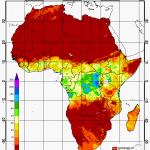 The TAMSAT group uses satellite imagery to estimate near real time daily rainfall for all of Africa, at 4km resolution. TAMSAT rainfall estimates support climate services, ranging from seasonal drought insurance to infrastructure planning. In addition, we carry out research on hydrological and agricultural risk, African climate variability, remote sensing methodologies and data assimilation.
The TAMSAT group uses satellite imagery to estimate near real time daily rainfall for all of Africa, at 4km resolution. TAMSAT rainfall estimates support climate services, ranging from seasonal drought insurance to infrastructure planning. In addition, we carry out research on hydrological and agricultural risk, African climate variability, remote sensing methodologies and data assimilation.
Research Divisions: Earth Observation and Space, Climate
Tropical weather group
Group leader: Steve Woolnough
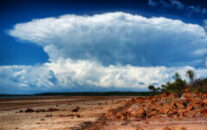 We focus on advancing our understanding and simulation of tropical phenomena on scales ranging from individual convective cells to large-scale monsoon circulations and atmosphere-ocean coupled modes of variability, such as the El Nino Southern Oscillation. Particular foci include the Madden-Julian oscillation, the South and East Asian monsoons, African rainfall and Maritime Continent variability.
We focus on advancing our understanding and simulation of tropical phenomena on scales ranging from individual convective cells to large-scale monsoon circulations and atmosphere-ocean coupled modes of variability, such as the El Nino Southern Oscillation. Particular foci include the Madden-Julian oscillation, the South and East Asian monsoons, African rainfall and Maritime Continent variability.
Research Divisions: Weather, Climate
TROPICAL CYCLONE GROUP
Group leader: Pier Luigi Vidale
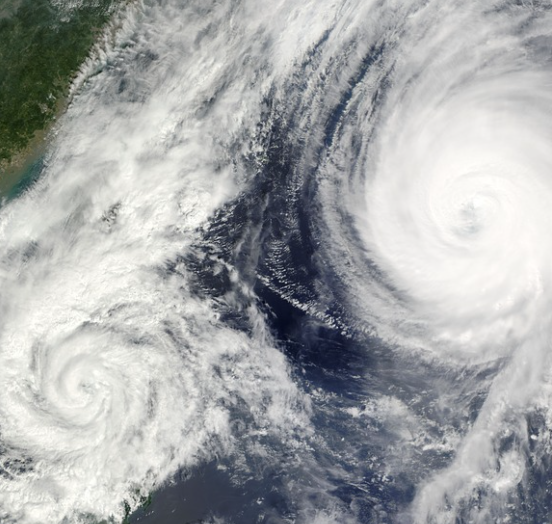
Tropical cyclones, including hurricanes and typhoons, are among the most damaging natural hazards. The damages left by the most severe storms in their wake can run into the billions of dollars. The Department of Meteorology’s Tropical Cyclone Group explores a wide range of scientific tools and datasets to better understand tropical cyclones and the risks they pose—now and in the future. Our members are investigating how—and why—the frequency of these storms varies from year to year and on longer timescales; what factors control how quickly storms intensify and where they make landfall; the small-scale meteorological processes that operate within tropical cyclones; how tropical cyclones contribute to climate variability; and how well climate models are able to simulate these weather events.
Research Divisions: Weather, Climate, Earth Observation and Space
TURBULENCE
Group leadership: Janet Barlow, Peter Clark, Omduth Coceal, Helen Dacre, Alan Grant, Sue Grimmond, Bob Plant, Miguel Teixeira, Paul Williams
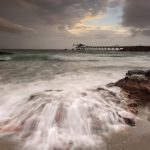 The Turbulence Research Group (previously the Boundary Layer Research Group) studies small-scale flows in the atmosphere and oceans where turbulence is present. Recent research has included urban boundary layers, dispersion, air quality, ocean mixed layer dynamics, cloud-topped boundary layers, convection, orographic drag, and clear air turbulence, using methods such as ground-based remote sensing, large eddy simulation, mesoscale modelling, theoretical development and parametrization. The group meets during academic semesters with a variety of informal talks, visitor seminars, paper reviews, and discussions.
The Turbulence Research Group (previously the Boundary Layer Research Group) studies small-scale flows in the atmosphere and oceans where turbulence is present. Recent research has included urban boundary layers, dispersion, air quality, ocean mixed layer dynamics, cloud-topped boundary layers, convection, orographic drag, and clear air turbulence, using methods such as ground-based remote sensing, large eddy simulation, mesoscale modelling, theoretical development and parametrization. The group meets during academic semesters with a variety of informal talks, visitor seminars, paper reviews, and discussions.
For urban boundary layers, please see the Urban Meteorology research group.
Research Divisions: Weather, Climate
Urban Meteorology group
Group leaders: Sue Grimmond, Janet Barlow, Peter Clark, Omduth Coceal
 The urban meteorology group undertake measurements and modelling of atmospheric processes in cities. Their research covers the development and evaluation of new parameterizations, the development and application of tools to provide climate services. Their research is concerned with micrometeorological, hydrological, meso-scale, climate, weather, dispersion, air quality, data assimilation and boundary layer processes.
The urban meteorology group undertake measurements and modelling of atmospheric processes in cities. Their research covers the development and evaluation of new parameterizations, the development and application of tools to provide climate services. Their research is concerned with micrometeorological, hydrological, meso-scale, climate, weather, dispersion, air quality, data assimilation and boundary layer processes.
Research Divisions: Weather, Climate, Earth Observation and Space
Water@Reading
Group leaders: Hannah Cloke (Meteorology and Geography & Environmental Science) and Liz Stephens (Meteorology)
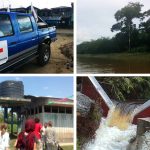 Water@Reading is a cross-faculty research group for the science and policy of building resilience to water related hazards across the world. We have particular expertise in hydrometeorology, monitoring and forecasting droughts and floods, water quality, urban hydrology, global scale hydrology, climate impact on water resources, satellite applications, policy and practice for catchment management and future water.
Water@Reading is a cross-faculty research group for the science and policy of building resilience to water related hazards across the world. We have particular expertise in hydrometeorology, monitoring and forecasting droughts and floods, water quality, urban hydrology, global scale hydrology, climate impact on water resources, satellite applications, policy and practice for catchment management and future water.
Research Divisions: Weather, Climate, Earth Observation and Space
back to Research Groups menu
Contact us
- Telephone
+44 (0)118 378 8950 - Full details
- Visiting the University
Visit the Department:
Department of Meteorology
University of Reading
Brian Hoskins Building
Whiteknights Road
Earley Gate
Reading
Berks RG6 6ET
Please use the Satnav postcode RG6 7BE for the Earley Gate entrance.
